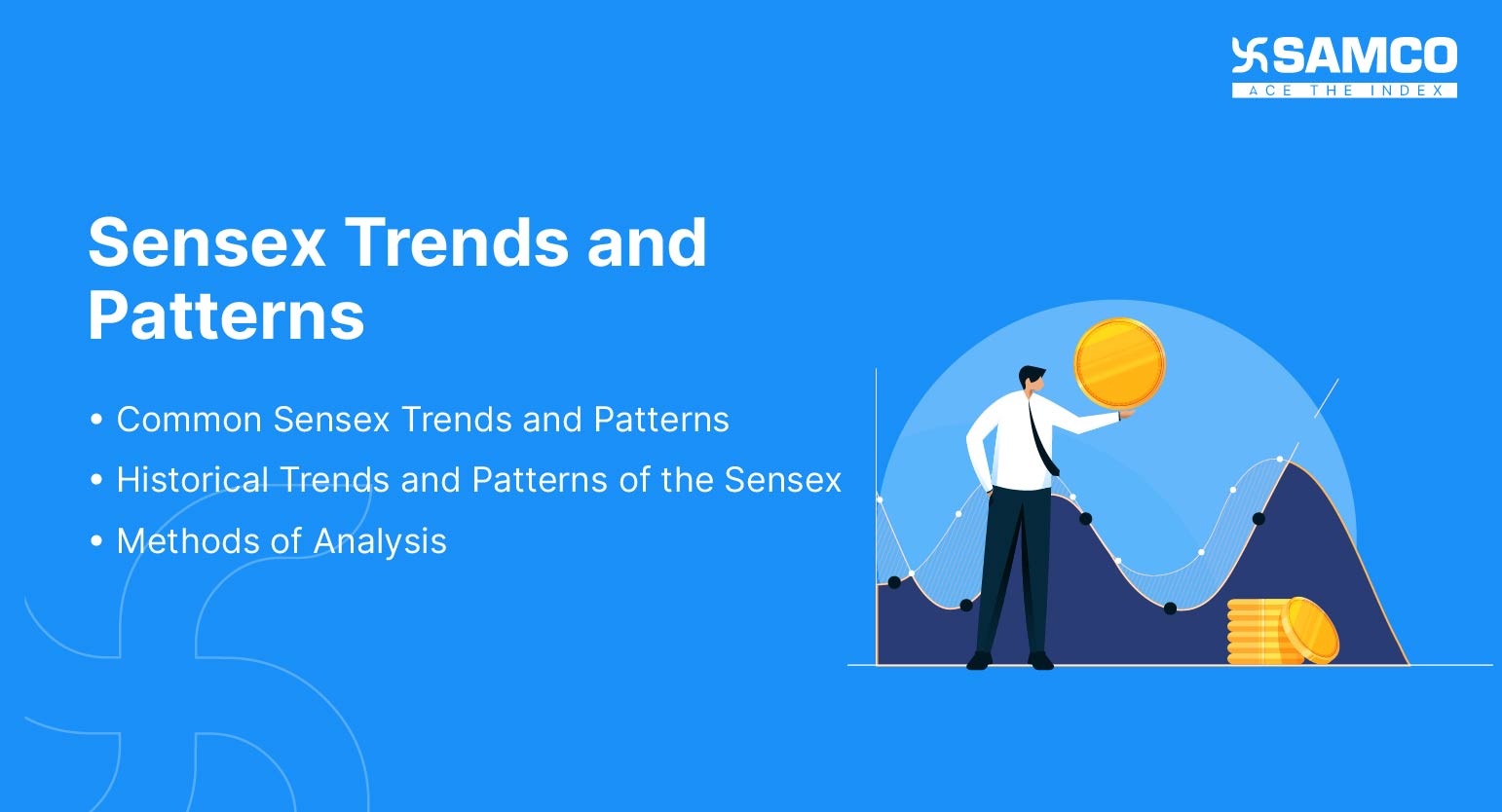In this article, we will discuss
- Historical Overview of Sensex
- Common Sensex Trends and Patterns
- Historical Trends and Patterns of the Sensex
- Methods of Analysis
- Case Studies
 The Bombay Stock Exchange's Sensex, or the S&P BSE Sensex, is one of the most prominent stock market indices in India. Comprising 30 large, established companies in various industries, it provides a snapshot of the Indian economy's health and performance. Understanding Sensex trends and patterns is essential for investors looking to make informed decisions about their investments in India.
Analyzing Sensex trends and patterns can provide valuable insights into market movements and help investors identify potential opportunities and risks. Historical data can reveal common trends such as bull and bear markets, seasonal and cyclical trends, and volatility patterns. This information can be used in technical and fundamental analysis to make informed investment decisions.
Today, we will delve deeper into the historical trends and patterns of the Sensex, explore various analysis methods, and examine case studies of the Sensex's performance during significant events.
The Bombay Stock Exchange's Sensex, or the S&P BSE Sensex, is one of the most prominent stock market indices in India. Comprising 30 large, established companies in various industries, it provides a snapshot of the Indian economy's health and performance. Understanding Sensex trends and patterns is essential for investors looking to make informed decisions about their investments in India.
Analyzing Sensex trends and patterns can provide valuable insights into market movements and help investors identify potential opportunities and risks. Historical data can reveal common trends such as bull and bear markets, seasonal and cyclical trends, and volatility patterns. This information can be used in technical and fundamental analysis to make informed investment decisions.
Today, we will delve deeper into the historical trends and patterns of the Sensex, explore various analysis methods, and examine case studies of the Sensex's performance during significant events.
Historical Overview of Sensex
-
Brief History of Sensex
-
Factors that Influence Sensex Movements
-
Importance of Sensex for the Indian Economy
Common Sensex Trends and Patterns
-
Bull and Bear Markets
-
Seasonal Trends
-
Cyclical Trends
-
Volatility Patterns
-
Correlation with Global Markets
Historical Trends and Patterns of the Sensex
Sensex exhibits various long-term and short-term trends and patterns, which can be used to make informed investment decisions. For investors and financial analysts to make wise decisions about investments and financial planning, it is essential to understand the historical trends and patterns of the Sensex. While the long-term trend shows steady growth, its short-term trends are subject to various macroeconomic factors, including government policies, corporate earnings, and global economic events.1. Long-term Trends and Patterns of Sensex Movements
Over the years, Sensex has witnessed periods of high growth and market declines. Here is a short overview.-
Major Bull and Bear Markets in Sensex History
-
Historical Analysis of the Sensex Growth Rate
2. Short-term Trends and Patterns of Sensex Movements
Investment in Sensex can be done daily, weekly, or early, depending on the investor's capacity and risk tolerance. But each pattern has its trends and patterns. Here is an overview.-
Intraday and Daily Sensex Trends
-
Weekly and Monthly Sensex Trends
-
Yearly Sensex Trends
Methods of Analysis
Analysis can be done in two ways, fundamental analysis and technical analysis.1. Technical Analysis
Technical analysis involves studying past market data and price movements to identify trends and patterns that can inform future investment decisions. Here are some commonly used technical analysis tools for analyzing Sensex trends and patterns:- Moving Averages
- Relative Strength Index
- Bollinger Bands
2. Fundamental Analysis
To ascertain a company's inherent value, fundamental analysis looks at its financial and economic data. Sensex trends and patterns can be examined using the following fundamental analysis tools:
-
Earnings Reports
-
Economic Indicators
-
Industry News
Case Studies
-
Sensex Trends During the Pandemic
-
Sensex Trends During Political Events
-
Sensex Trends During Economic Crises



 Easy & quick
Easy & quick
Leave A Comment?